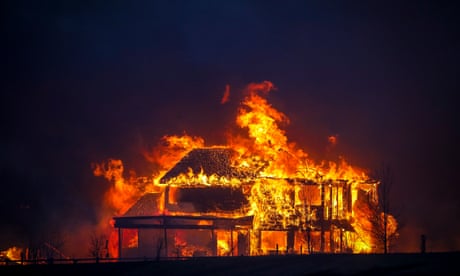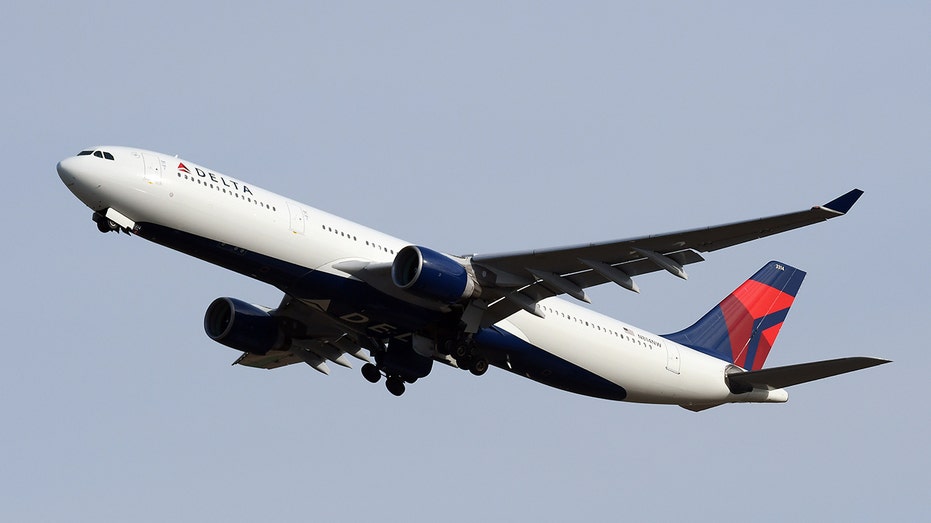- by foxnews
- 20 Mar 2025
‘All that’s needed is a spark’: why the US may be headed for a summer of mega-fire
‘All that’s needed is a spark’: why the US may be headed for a summer of mega-fire
- by theguardian
- 08 Jul 2022
- in news

Following an explosive spring that unleashed major wildfires from the US south-west to Alaska, the west is now bracing for a summer of blazes as the parched landscapes risk turning into tinderboxes.
Fire activity is expected to increase in several US states over the coming months, according to a newly released outlook from the National Interagency Fire Center (NIFC), with parts of the Pacific north-west, northern California, Texas, Hawaii and Alaska forecast to be among those hardest hit by fire conditions in the months ahead.
The severity of the emergency will depend on four key factors: drought, dried fuels, windy or warm weather, and of course, ignitions. But the climate crisis and human-caused warming has turned up the dial on risk-factors with more intense conditions and a greater frequency with which these conditions align.
"No matter which way you slice it, it is going to be bad," said Jim Wollmann, a meteorologist at the NIFC.
Here's what you need to know:
Already, the amount of acreage burned by this point in the year has eclipsed previous years, standing at roughly 220% higher than the 10-year average. In New Mexico in April, a blaze that started as a controlled burn escaped containment before it spread quickly and burned for months, consuming large swaths of land and hundreds of homes and other buildings. In Alaska, fires sparked by lightning strikes and fueled by unusually hot and dry conditions have torched more than 2m acres in recent weeks, a first for the state this early in the season.
The early escalation has put more pressure on strained first responders, consumed more resources earlier in the year, and has shortened the window when preventive treatments like prescribed burning can be performed. Climate crisis is a key culprit, causing a shift in conditions that officials say also contributed to the controlled burn going awry.
With the hottest months ahead for most of the west, these stresses may only be the beginning - the desiccated landscapes are primed to burn. Decades of fire suppression has left ample vegetation to burn, while timber harvesting that targets the oldest trees has impacted resiliency in forests.
Meanwhile, even after the record rains that flooded parts of Yellowstone and south-central Montana, more than 75% of the west is in drought, with exceptional drought conditions plaguing areas including most of California, the Great Basin and Texas.
While drought is natural in the west, with periods of dryness interspersed with wet ones being part of the region's climate going back thousands of years, a strong warming trend is exacerbating the problem, said Dr Tim Brown, the director of the Western Regional Climate Center at the Desert Research Institute.
Hot droughts, as they are called by climate scientists, are particularly problematic - especially when it comes to fire risks. Heat alone enhances ignition potential, but when combined with drought it "is a major feedback process", Brown said. Rising temperatures bake moisture out of the landscapes and out of the environment. "If it's hotter it is drier and the fuels become more flammable."
Already, scientists are seeing peak levels of dryness in plants. In mid-June, California fire officials said vegetation was as dry in June as it typically is in October, when summer and autumn heat has had time to bake out more moisture.
"It is dire across the board," said Dr Craig Clements, the director of the Wildfire Interdisciplinary Research Center at San Jose State University about drying California landscapes. "We have a lot of accumulation of dead fuels and because of drought it is just going to get worse and worse. We can only expect as we get later in the summer, that the fires will get bigger."
Along with an increased risk of ignition, the intense conditions also make fires that do start spread more quickly. "We are witnessing wildfire behavior, fueled by severe drought and high winds that now characterize the summer months, that has never been encountered before," a spokesperson for the United States Forest Service said.
CalFire battalion chief Jon Heggie called the conditions a "recipe for disaster".
"The fire behavior we are seeing is not like what we started with in our careers", he said.
Along with increasing heat and deepening drought, temperatures in the west now linger at the highs longer into the night. Fires that once calmed after the sun went down now often rage without reprieve, offering limited opportunity for containment. "Fires are burning actively through the night, which is not something I saw in the first two-thirds of my career," Heggie said.
"What's concerning is that typical indicators for extreme fire behavior, like strong winds or low relative humidity combined aren't necessary anymore" said Wollmann, the NIFC meteorologist. "Even with normal, typical afternoon winds we are seeing rapid rates of [fire] spread."
Facing a longer firefighting season layered with more difficult battles, firefighters across the US west are feeling the strain.
"The grind just never stops," said Kelly Martin, the president of Grassroots Wildland Firefighters, a firefighter non-profit advocacy group. Crews who have been fighting the fires across the southwest are only just starting what will be a long and hard season, she said: "The incredible toll that it takes physically and mentally is excruciating and cumulative on wildland firefighters like we have never seen before. People are burned out. The pay is oppressive and the conditions are extraordinary."
Wildland firefighters have carried the burden, and it has exacted a devastating toll, with high rates of suicide, substance abuse and divorce. Low-pay and poor working conditions have caused many to resign, especially at the federal level where salaries are the lowest. That's left holes in crewing preventative treatments and on the biggest blazes.
Going into another dangerous summer, the Biden administration announced that funds from the infrastructure bill would provide a temporary fix, granting federal firefighters a temporary raise. The money - the lesser of either a $20,000 increase or a 50% base-pay bump - applies retroactively to last October and is already hitting paychecks. Biden vowed to continue working for long-term funding "to make sure these heroes keep earning the paychecks - and dignity - they deserve", he said in a statement.
But some feel that this move, while a positive shift, is too little and too late. "Everyone knows federal firefighters are underpaid," said a federal firefighter who asked to remain anonymous for fear of retribution for speaking out. "But fires have also changed dramatically. "We are going to crazier fires with more values at risk, more homes at risk, more people's lives at risk."
While the forecast paints a grim picture of the coming months, there is some good news. A spate of spring showers delayed the onset of the highest risk conditions in much of the northwest. "We are in a little bit of a better situation than we were a month ago," Wollmann said, noting that the wet spring shortened the window for when the worst conditions might align and create hard-to-control conflagrations.
But, climate crisis has still raised the stakes. The rains were not intense enough to alleviate the drought and they also produced a new problem - spurring a growth in grasses that will brown under the summer heat.
More rain expected during the upcoming summer monsoon should also offer a reprieve for the besieged southwest and southern Great Basin. But in areas where a thorough wetting isn't expected until winter, the stage is set for a high-risk summer. All that's needed is a spark.
"We really want people to be fire-aware," Wollmann said. "If you are in an area that is fire-prone - which is pretty much anywhere in the west - even if we forecast the potential above normal, that doesn't mean fires aren't going to happen."
- by foxnews
- descember 09, 2016
Man allegedly attacks passenger on Delta flight from Atlanta to LA: 'Zero tolerance for unruly behavior'
The FAA is investigating an incident after a passenger allegedly attacked a number of people on a Delta Air Lines flight from Atlanta to Los Angeles on Monday.
read more


